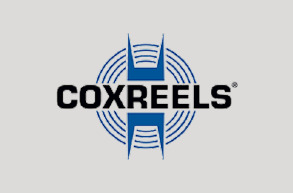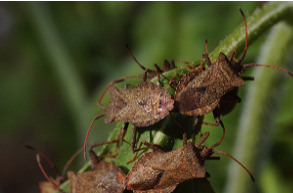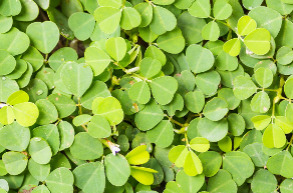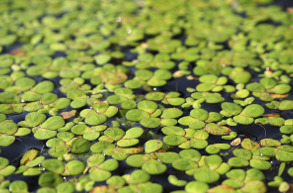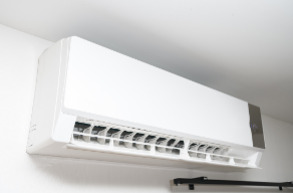Barnyardgrass Control
Most Effective Products
Barnyardgrass Control: How to Get Rid of Barnyardgrass
Barnyardgrass (Echinochloa crus-gallia) is a summer annual grassy weed which has long been a problem on agricultural farms but has now spread its way onto residential lawns. It is often found in rice, corn, orchards, vegetables and other agricultural crops. It can also be found in moist turf areas and marshes.
Barnyardgrass is easy to identify because of its unique seedhead, which is usually purple with a bristle at the end which can vary from 2 to 8 inches in length. Seeds develop on side branches and are flat on one side and round on the other.
This weed can produce more than 2,400 pounds of seeds per acre. Wind, water, animals, and humans help to spread the seed to other areas. Barnyardgrass is a vigorous grower and quickly removes vital nutrients such as potassium, nitrogen and phosphorus from the soil so if it grows onto your lawn, you have to act fast to control it before it zaps the lawn of all of its nutrition.
If your lawn has been invaded by Barnyardgrass, our step-by-step DIY treatment guide will show you exactly how to get rid of Barnyardgrass quickly and affordably.
Identification

Barnyardgrass spreads by seed and grows in clusters where it roots and branches at the lower joints. Mature plants can reach heights up to 5 feet. Stems are smooth and stalky and flat near the base of the plant. Leaves are smooth but may be rough closer to the tip.
Use the description and image above to help you to identify whether your weed is Barnyardgrass. If you are unsure which kind of weed you are encountering in your yard, turn to the experts to ID the weed for you by contacting us.
Inspection

When to Inspect
Barnyardgrass blooms from June to October where it is prevalent. This is an annual weed that is killed by the frost of winter and grows quite aggressively compared to other grasses where it has established. Some species of Barnyardgrass are aquatic and thick stands of these can be found growing in margins of lakes and marshes and along roadsides.
What to Look For
Watch out for an erect or slightly sagging stalk growing at the tops of the plants. Aside from checking the severity of its presence, also check what maturity level the Barnyardgrass is at because if they are more mature, you're looking at a more difficult time removing the plant.
Treatment
Barnyardgrass can be a headache to hand-pull and frankly doing so is a waste of time because if it has already gone to seed, it will just grow back if you yank it out from the ground. The best option for control is utilizing chemical herbicides. Make sure to wear the proper personal protective equipment before applying any herbicides to your yard.
A pre-emergent at the right time will protect against Barnyardgrass. However, if Barnyardgrass is already growing on your lawn you can use Martin's Eraser which contains the active ingredient Glyphosate.
Step 1 - Spot Treat With Post Emergent

For Barnyardgrass that has emerged, Eraser is a top choice for residential DIYers. It contains 41% Glyphosate as an active ingredient and works systemically through the foliage down to the root killing the entire plant within days.
Measure the square footage of the treatment area to determine how much Eraser you need. For spot treatments, 2.5 oz. of Eraser in a gallon of water can treat 300 sq. ft. Mix the appropriate amount of Eraser into your sprayer and mix well. With a fan tip nozzle, spray a fine mist to the Barnyardgrass to ensure it is evenly coated.
You may need to do repeat applications after 7 to 10 days if the weed is particularly persistent and problematic. Barnyardgrass is known to develop resistance so you can contact our experts to see which alternatives you can use if Eraser ends up not giving you the desired results.
Eraser is a non-selective herbicide and will whatever you spray so you must be very careful when applying Eraser if Barnyardgrass is near your desired grass. In some cases, it may be better to paint the product on the barnyard grass with a brush or block the desired grass with a piece of cardboard.
Prevention
After you have eliminated Barnyardgrass from your property, you need to implement culture practices and apply Barricade pre-emergent to prevent their return. Timing is key or the product will not successfully keep the Barnyardgrass from growing. Apply in the spring before you see any of the Barnyardgrass.
Barricade contains Prodiamine, a highly effective active ingredient that controls and prevents seeds from sprouting. Depending on your turfgrass type, Barricade can be applied at a rate from 1.5 pounds to 4 pounds per 1,000 sq. ft. (read the label to find the proper rate for your turf type). Measure the square footage of your lawn to determine how much Barricade you will need.
Once you have measured the appropriate amount based on your calculations, load the Barricade granules at the right calibration setting into a hand or push spreader and then apply the granules until your lawn is covered evenly to get a uniform application. A push spreader is preferred if you have a large property to spread the granules on while a hand spreader, like the Plantmates Scatterox, is better for more precision and control over where you want to spread the granules. After broadcasting the granules, you should then water in and activate them with at least 0.5 inches of water.
If you keep your lawn healthy with proper mowing and fertilization, there will be very little room for this stubborn grass to grow. Continue laying out pre-emergent during the spring and fall to keep Barnyardgrass from making a comeback.
Key Takeaways
- Barnyardgrass is a particularly difficult summer weed to control because it has multiple germinations or cohorts. It is a fast grower that is known to spread over lawns and gardens quickly
- We recommend applying a spot treatment of Eraser to remove Barnyardgrass from your lawn.
- To prevent Barnyardgrass from returning, a mixture of good lawn maintenance practices and repeat pre-emergent applications of Barricade should be implemented.
























































